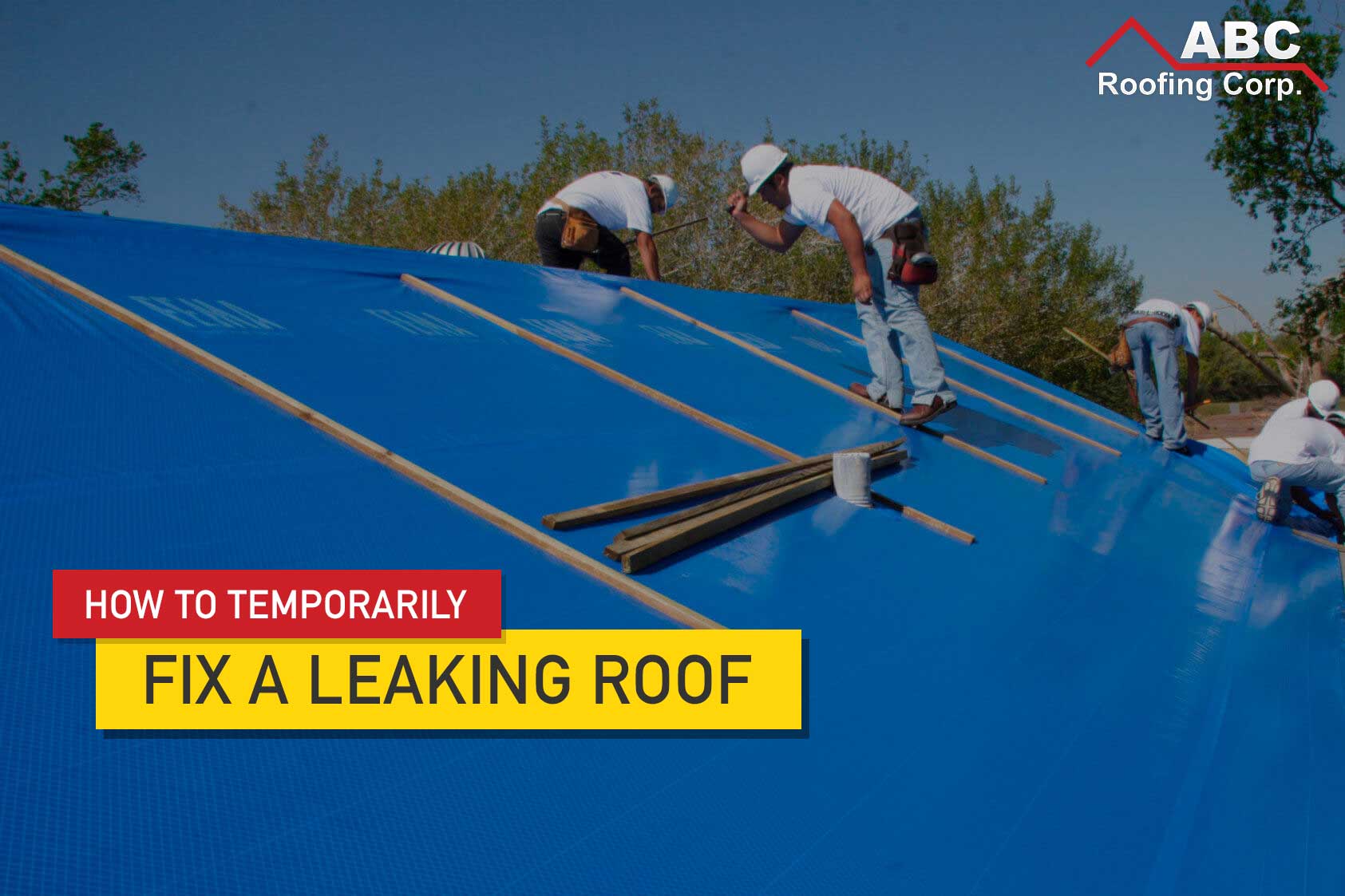
Roofs are an important part of our lives. They help keep us comfortable by shielding us from rain, wind, and other elements mother nature throws at us. When roofs are installed and maintained by qualified roofing professionals, they tend to do their jobs well. No matter how well installed and maintained a roof is, however, problems such as leaking still occur. These problems may be caused by things such as falling debris, extreme weather conditions, or a number of other reasons.
If your roof is damaged for whatever reason, it is essential that you not only know how to respond but also that you know how to temporarily fix problems using techniques such as roof tarping.
What Should I Do If My Roof Is Damaged?
If your roof is unexpectedly damaged, say from a hurricane, it can be extremely stressful and difficult to find the contact details of emergency roofing professionals. It is therefore advisable that you take the first step towards being prepared to fix a damaged roof right now by locating a roofing expert in your area and saving their contact information.
If you suspect damage to your roof, your first step should always be to call a qualified roofing professional. They will be able to advise you on how extensive the damage to your roof is. They will also be able to advise you on whether the roof can be repaired or if it needs to be completely replaced.
Finally, professionals will be able to make use of their expert skills and knowledge to perform the required repairs or roof replacement.
For various reasons, roofing experts may not immediately be able to permanently repair your roof. In cases like this, “blue roof” or tarp repair may be necessary as a temporary fix for a damaged roof.
What Is Roof Tarping?
Roof tarping is a simple and effective temporary repair that ensures the interior of your building is protected from damage due to things like leaks. Roof tarping is often called blue roofing because most times the plastic tarp that is used to temporarily repair damaged roofs are blue.
How Is It Done?
The following steps are a basic roof tarping illustration. It is not intended to be a comprehensive guide to repairing roofs using tarp but merely to illustrate how it is done.
Step 1: Ensure That You Have All The Equipment And Materials You Need
This includes high quality woven poly tarp, a hammer, nails, 2×4 wooden boards, safety goggles, utility knife, and a drill.
Step 2: Clear The Debris And Locate The Source Of The Leak
In this step, you can look for things like broken roof tiles or panels to identify the source of the leak, (if it is not immediately obvious where it is coming from.)
Step 3: Measure And Cut The Tarp You Will Need
The amount of tarp you will need will vary depending on the size of the damaged area. Measure the area that needs to be covered, get the correct size tarp, unroll it over the damaged area and allow for the overhang of 4-feet past the peak. The rest can be left to hang off the eave.
Step 4: Make An Anchor Board And Sandwich The Tarp
In this step, it is essential that the 2×4 wooden board used is at least two feet longer than the width of the tarp. Connect the peak end of the tarp to the wooden board using nails. The board must then be placed against the roof. Wrap the tarp around the board. After this, use a screw to fasten the board to the roof so that it can act as an anchor. The tarp must then be sandwiched by attaching two pieces of 2×4 to both edges of the tarp. It is essential that the tarp is tight to the roof to prevent water leakage.
Step 5: Stretch The Tarp Over The Side Of Your Roof And Secure The Ends
In this step, it is once again essential that a 4-foot overhang is left. Attach the tarp to a 2×4 using nails (spaced at least 10 inches apart) as was done on the other side. Make sure that the tarp is pulled tightly against the roof and wrap it around the board. After this, attach it under the eve using a drill. Finally, the ends (and tarp) can be secured by attaching 2×4 boards below the sides of the tarp. This will also prevent leakage.
Roof repair is complex but you can minimize your need for repairs by ensuring your roof is properly installed and maintained and that you are prepared for roofing emergencies. If repairs are needed, remember, it’s always best to call the professionals because they have the expertise and knowledge to complete a quality job. Sometimes permanent roofing repairs are not immediately possible and methods such as roof tarping can be used as a temporary solution. For more information on roof repairs contact ABC Roofing Corp at (954) 344-4622, today!
